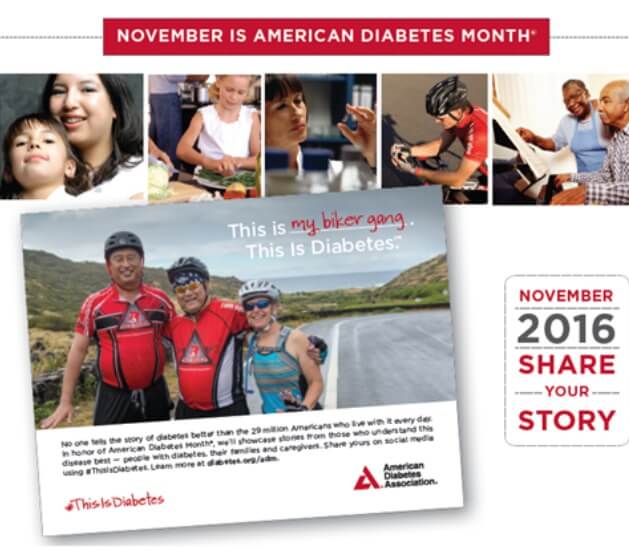#ThisIsDiabetes

November Is American Diabetes Month
Did you know that 1 in 11 Americans today has diabetes? Despite its prevalence, diabetes is an invisible disease. It affects men and women, people young and old, and people of all races, shapes and sizes. Often there are no outward signs from the 29 million Americans who fight this chronic illness every day. That’s why there is a critical need to foster awareness and education while breaking down stereotypes, myths and misunderstandings about this growing public health crisis that affects so many of us.

This is exactly why the American Diabetes Association marks each November as American Diabetes Month: to bring extra attention to the disease and the tens of millions of people affected by it.
This November, the organization will showcase real-life stories of friends, families and neighbors managing the day-to-day triumphs and challenges of diabetes. The 2016 campaign, sponsored by Colgate Total®, National Oral Care Strategic Partner, invites us to use #ThisIsDiabetes to share our personal stories and to start a dialogue about what it really means to live with diabetes.
Diabetes is more than the medications and devices used to manage it. For many, diabetes dictates how they organize their day, what they eat at every meal, how they choose to be physically active and how they spend their money. People with diabetes can have health care costs that are 2.3 times higher than someone without diabetes, as type 1 and type 2 require very specific forms of treatment.
Type 1 diabetes is an autoimmune disease usually diagnosed in children and young adults, and there is no known way to prevent it. Approximately 5 percent of people with diabetes have type 1, which means their body does not produce any insulin. Insulin is critical in order for the body to transport glucose (sugar) from the bloodstream into cells for energy. People with type 1 diabetes must take insulin every day to live.
Type 2 diabetes is the most common form of diabetes, accounting for 90 to 95 percent of cases in the United States, and is caused when the body does not produce or use insulin properly. Risk factors for developing type 2 diabetes include being overweight, having a family history of diabetes and having diabetes while pregnant (gestational diabetes). Some people with type 2 diabetes can control their blood glucose (sugar) with healthy eating and being active; other may require oral medications or insulin, especially as the disease progresses. Type 2 diabetes is more common in African Americans, Latinos, Native Americans and Asian Americans/Pacific Islanders, as well as older adults.
Some women develop gestational diabetes, high blood glucose (sugar) levels during pregnancy, which requires treatment to protect the health of the mother and the baby. Gestational diabetes affects approximately 9.2 percent of pregnant women.

There’s a way for everybody to participate during American Diabetes Month in November. Share your story, or encourage a friend or family member to share theirs using #ThisIsDiabetes. Be sure to also follow the American Diabetes Association on Facebook, Instagram, and Twitter.
You can also update your Facebook profile picture to help raise awareness, sign up to become an advocate and donate to help the American Diabetes Association continue their critical work. To learn more and view #ThisIsDiabetes stories from around the country, check out www.diabetes.org/adm.


